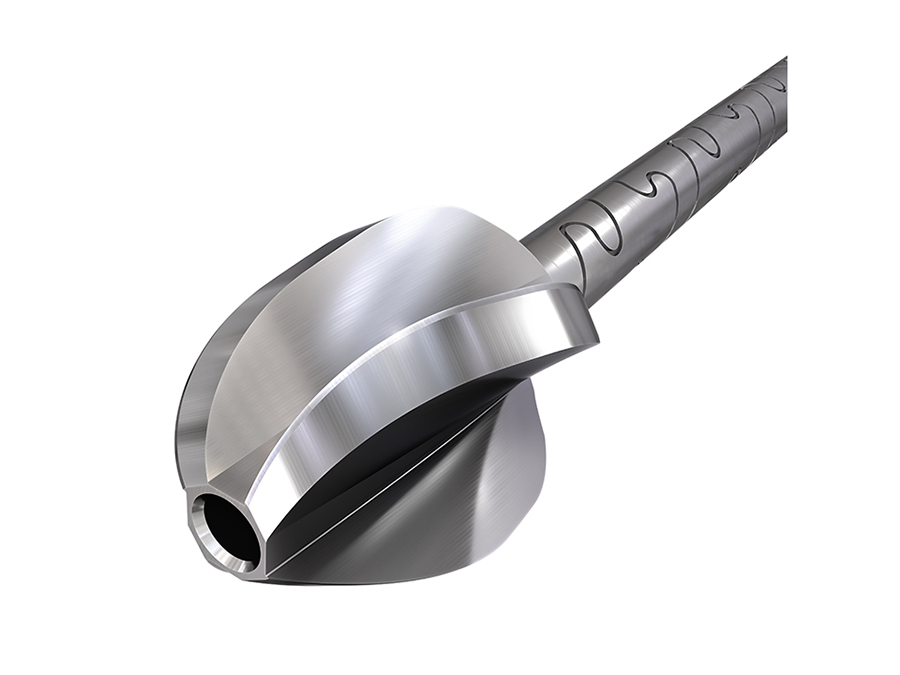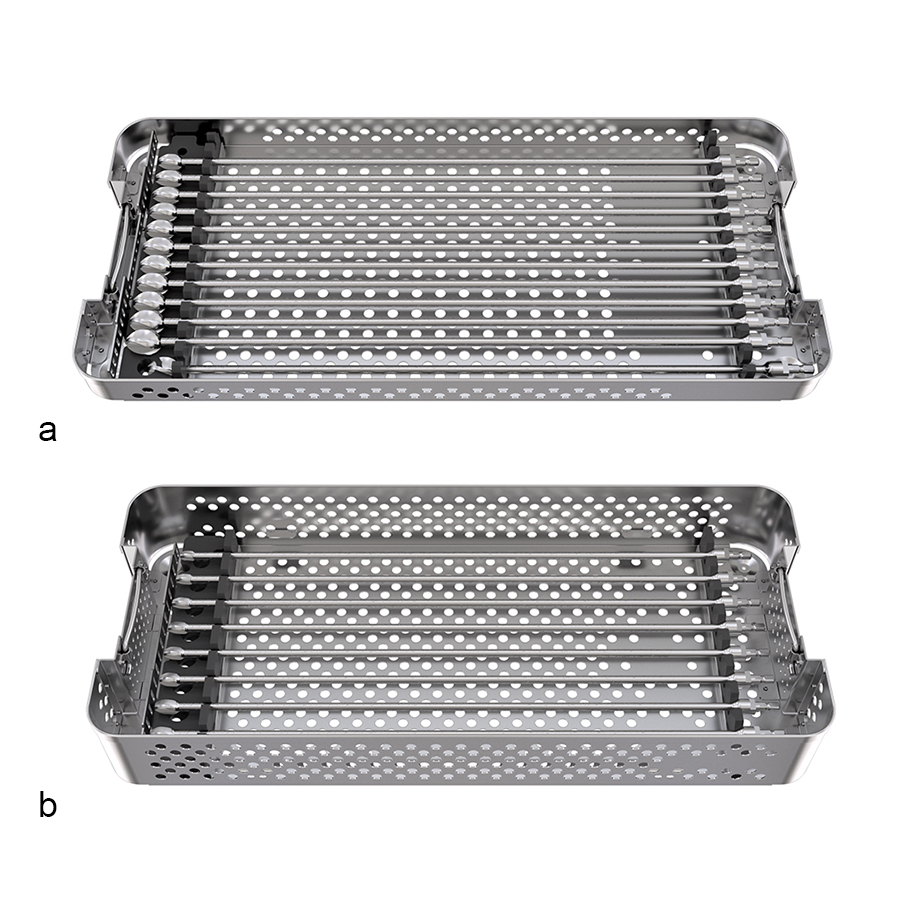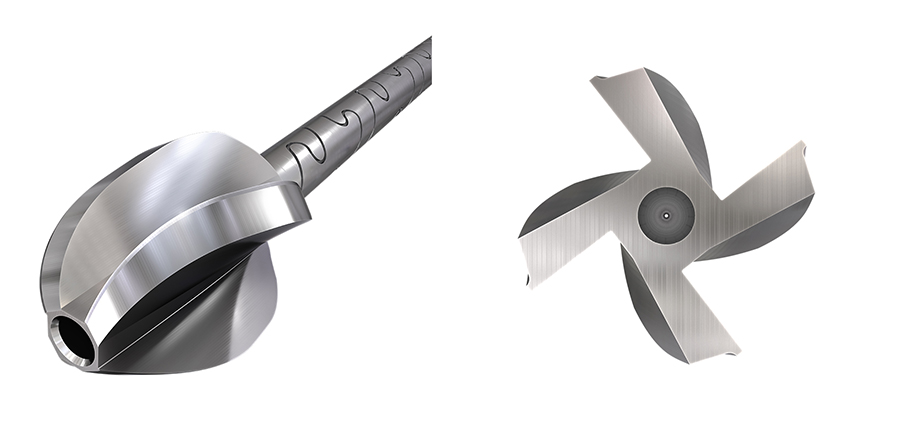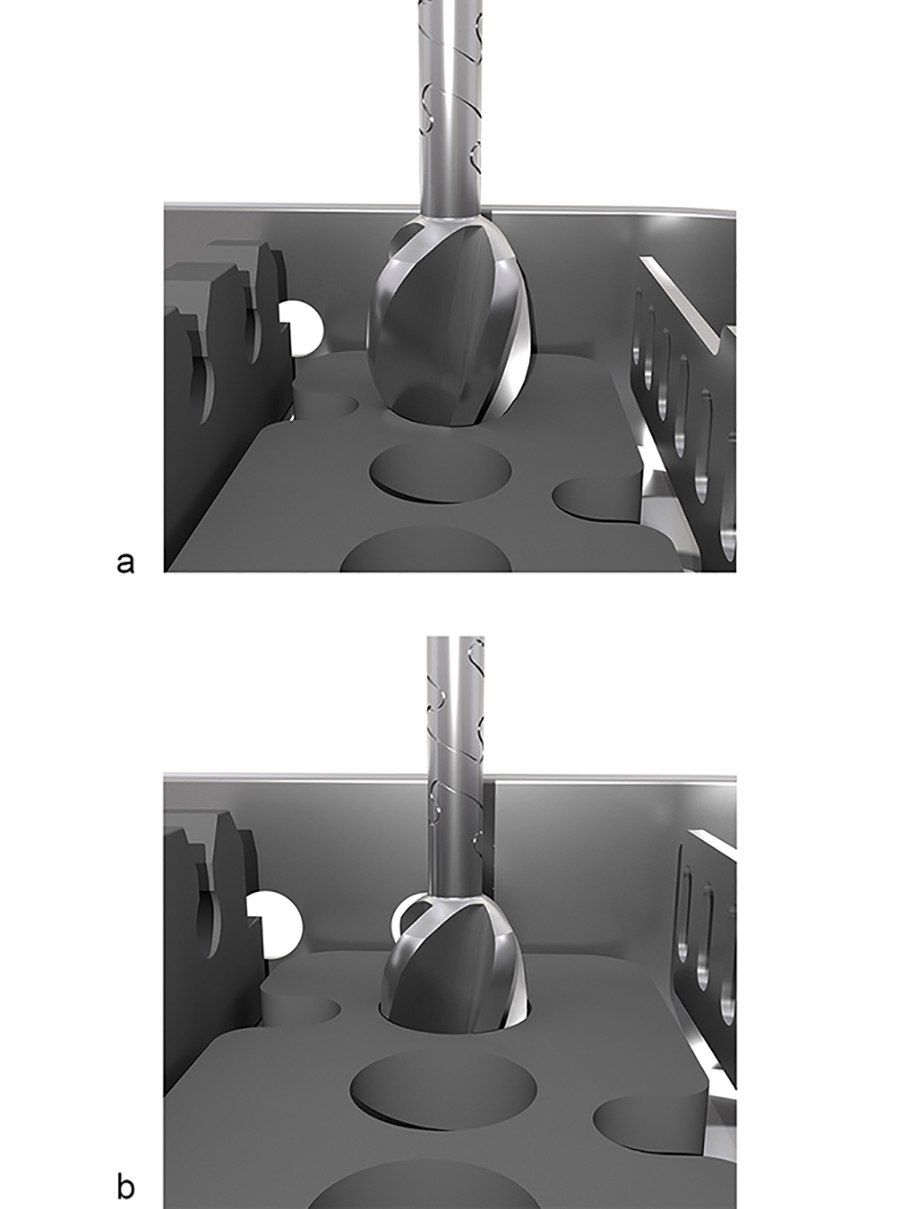
Flexible Monobloc Reamers
Christopher Finkemeier, Mark Lee, Andrew Oppy, Martin Hessmann
In response to various clinical demands (cutting performance, usability), new Flexible Monobloc Reamers have been developed to ream an intramedullary bone canal in preparation for insertion of implants.
The new monobloc reamers are provided in reamer diameters from 8 mm to 18 mm in 0.5 mm increments and in reamer lengths of 480 and 620 mm. Each reamer has a one-piece design with a flexible shaft. Compared with modular reamers there is no need for intraoperative reamer head exchange. All reamers have a hybrid reamer head design that incorporates both front- and side-cutting features. The deeply fluted reamer heads function to reduce intramedullary pressure and increase the flow of bone chips and marrow. A wear indicator in the Graphic Case allows surgeons to understand the extent of the reamer deterioration.
With the new Flexible Monobloc Reamers, surgeons can choose simplicity and enhanced usability for the reaming procedure that has the potential to be challenging and time consuming when using a modular reamer systems.
During the design of Gerhard Küntscher's cloverleaf nail intended for the intramedullary internal fixation of femoral shaft fractures in the late 1930s, it became apparent that a device that is too large for the isthmus impeded insertion and resulted in jamming or iatrogenic fracture. To avoid such problems, Küntscher proposed reaming of the medullary cavity before nail insertion. He also suggested that this will enable use of a larger diameter implant, thereby providing better stability and a reduced risk of postoperative implant breakage.
Since the introduction of reaming, instruments used for the adoption of this pre-nailing procedure have evolved significantly. In response to various clinical demands specific to intramedullary reaming (cutting performance, usability), the Intramedullary Nailing Expert Group has developed the new Flexible Monobloc Reamers that are intended to ream an intramedullary bone canal (femur/tibia) in preparation for the insertion of implants.
The new monobloc reamers are provided in reamer diameters from 8 mm to 18 mm in 0.5 mm increments and in reamer lengths of 480 and 620 mm (Fig 1). Each reamer has a one-piece design with a flexible shaft manufactured from laser-cut stainless steel (Fig 2). Compared with modular reamers there is no need for intraoperative reamer head exchange, which improves usability and streamlines the workflow with the potential to reduce surgery time. All reamers have a hybrid reamer head design that incorporates both front- and side-cutting features (Fig 3). Consequently, surgeons can reduce the rate of reamer passes per procedure through having the freedom to initiate reaming with a larger reamer diameter compared with the SynReam system which contains only one diameter of reamer head (8.5 mm) with a front-cutting design.
The flexible shafts and deeply fluted reamer heads (Fig 3) function to reduce intramedullary pressure and increase the flow of bone chips and marrow during reaming, which is important to reduce the risk of intravasation of bone marrow or fat into the vascular system potentially leading to pulmonary dysfunction.
The smooth reamer head to shaft transition (Fig 3) eradicates the potential for interference with the distal end of the soft tissue protection sleeve during reamer retraction that was sometimes reported as an issue when using the SynReam reamers. The new reamers are supposed to be used with the new Ø 3 mm Advanced Nailing System reaming rod with Ø 3.8 mm ball tip (available in 950 and 1150 mm lengths), which is beneficial for reducing fractures and controlled reaming.
The modified-trinkle (Hudson) connection of the new reamers eases the assembly to the power tool and thereby improves the overall usability (Fig 4).
A wear indicator in the Graphic Case allows surgeons to understand the extent of reamer wear. This feature will indicate if the reamer is worn more or less than Ø 0.25 mm.
If the reamer head interferes with the hole the reamer head has worn less than Ø 0.25 mm of the initial diameter (Fig 5a).
If the reamer head passes through the hole the reamer head has worn at least Ø 0.25 mm of the initial diameter (Fig 5b).
In addition to the new reamers, the following DePuy Synthes reaming systems continue to be available:
Monobloc Flexible Reamers — small:
- From sizes Ø 6 mm to 10.5 in 0.5 mm increments
- Flexible shaft of 385 mm
- Front-cutting
- Ø 2.5 mm reaming rod
Hand Reamers:
- Ø 6.0 mm, Ø 7.0 mm, Ø 8.0 mm
- 450 mm long
SynReam System:
- From sizes Ø 8.5 to 19 mm in 0.5 mm increments
- Flexible shaft of 470 mm (in the US system a 620 mm shaft is also available)
- Side-cutting, Ø 8.5 mm: front-cutting
- Ø 2.5 mm reaming rod
- Reamer heads from Ø 10 to 18 in 0.5 mm increments
- Drive shaft length: 520 mm
- Ø 2.5 mm reaming rod
- Front-cutting
Hazards and labeling
Due to varying countries’ legal and regulatory approval requirements, consult the appropriate local product labeling for approved intended use of the products described on this website. All devices on this website are approved by the AO Technical Commission. For logistical reasons, these devices may not be available in all countries worldwide at the date of publication.
Legal restrictions
This work was produced by AO Foundation, Switzerland. All rights reserved by AO Foundation. This publication, including all parts thereof, is legally protected by copyright.
Any use, exploitation or commercialization outside the narrow limits set forth by copyright legislation and the restrictions on use laid out below, without the publisher‘s consent, is illegal and liable to prosecution. This applies in particular to photostat reproduction, copying, scanning or duplication of any kind, translation, preparation of microfilms, electronic data processing, and storage such as making this publication available on Intranet or Internet.
Some of the products, names, instruments, treatments, logos, designs, etc referred to in this publication are also protected by patents, trademarks or by other intellectual property protection laws (eg, “AO” and the AO logo are subject to trademark applications/registrations) even though specific reference to this fact is not always made in the text. Therefore, the appearance of a name, instrument, etc without designation as proprietary is not to be construed as a representation by the publisher that it is in the public domain.
Restrictions on use: The rightful owner of an authorized copy of this work may use it for educational and research purposes only. Single images or illustrations may be copied for research or educational purposes only. The images or illustrations may not be altered in any way and need to carry the following statement of origin “Copyright by AO Foundation, Switzerland”.
Check www.aofoundation.org/disclaimer for more information.
If you have any comments or questions on the articles or the new devices, please do not hesitate to contact us.
“approved by AO Technical Commission” and “approved by AO”
The brands and labels “approved by AO Technical Commission” and “approved by AO”, particularly "AO" and the AO logo, are AO Foundation's intellectual property and subject to trademark applications and registrations, respectively. The use of these brands and labels is regulated by licensing agreements between AO Foundation and the producers of innovation products obliged to use such labels to declare the products as AO Technical Commission or AO Foundation approved solutions. Any unauthorized or inadequate use of these trademarks may be subject to legal action.
AO ITC Innovations Magazine
Find all issues of the AO ITC Innovations Magazine for download here.
Innovation Awards
Recognizing outstanding achievements in development and fostering excellence in surgical innovation.










